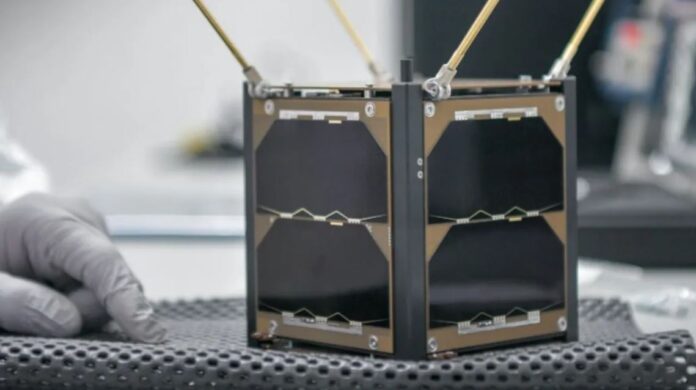At NASA’s request and with the help of the Mexican Space Agency (AEM), the National Autonomous University of Mexico (UNAM) and four other Mexican universities are helping to design and build four mini-satellites that will orbit the Earth to track marine animals.
The devices are just 10x10x10 centimeters and are called CubeSats because of their cube shape. They will track marine species that move from the north and south poles to the equator and back.
“Aztech-Sat” is the name of this project, which is made up of a group of satellites that will move slowly, in order, and away from Earth as part of a mission of NASA that is planning for 2025.
“We face a big scientific and technical challenge because we have to work with Mexican teams from different universities as a single team,” Andrés Martnez, NASA’s technical representative for Latin America, said at the official announcement of the project at the Third National Congress of Space Activities (CONACES 2022), held by the AEM in Aguascalientes.
AztechSat will help Mexican scientists learn new things and get the experience they need to build bigger satellites and come up with bigger projects that will help research and train people in the area.
UNAM will build a satellite with help from the High Technology Unit (UAT), the Faculty of Engineering (FI), the national laboratories of Space and Automotive Engineering (LN-INGEA, part of the FI) and Observation of the Earth (LANOT, part of the Institute of Geography), as well as experts from the Institutes of Astronomy (IA) and Geophysics (IA) (IGf).
#BoletínUNAM La UNAM participa con la NASA en el desarrollo de pequeños satélites, los cuales orbitarán la Tierra para rastrear animales marinos > https://t.co/dbridziphq #PositivamenteUNAM pic.twitter.com/Gcvur8K9TE
— UNAM (@UNAM_MX) August 31, 2022
The university’s CubeSat will cost 10 million Mexican pesos, which is less than what was spent on satellites in the past, which was in the tens or hundreds of millions of pesos.
Two more will be in charge of the Autonomous Popular Universities of Puebla, Panamericana. The Polytechnic University of Querétaro and the Aeronautical University of Querétaro will work together to make a team.
What will the NASA and UNAM minisatellites be used for?
The satellites will be used to set up a system for keeping an eye on marine animals that has a lot of improvements, like a wider geographic reach, a lower cost of investment, and a wider bandwidth for sending data.
“The monitoring equipment that has been used in the US for the past 10 or 15 years needs to be updated, because the sensors that are put on large marine animals so that they can send tracking data to satellites have their limits right now. “This will be the first project of its kind in the world in which Mexico takes part with more modern technology,” said José Francisco Valdés Galicia, who is in charge of the University Space Program (PEU).
Large marine animals like whales, sharks, and sea lions will have sensors attached to their bodies. The signals they send out will be picked up by the CubeSats, which weigh about 1.33 kilograms, so scientists can track their movements and migrations, learn about their habits, and see how it affects them. climate change .
The project could lead to the creation of an artificial satellite-based monitoring system for marine species that would use free software and hardware that can be bought in stores.
The goal from a scientific point of view
The goal from a scientific point of view is to make a database of marine species’ movements and locations so that large-scale research can be done. From a technological point of view, the development of the satellite aims to make use of software or commercial electronic programs to lower costs.
NASA, the Bureau of Ocean Energy Management (BOEM, which is in charge of making sure that the energy, mineral, and marine resources of the outer continental shelf of the United States are used in a way that protects the environment), and the AEM, which is a public body that coordinates Mexico’s space policy, all support the program.




























